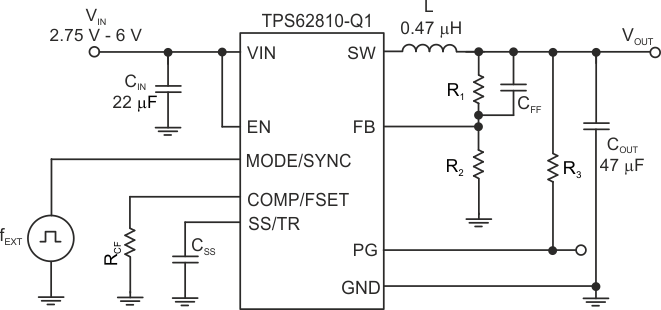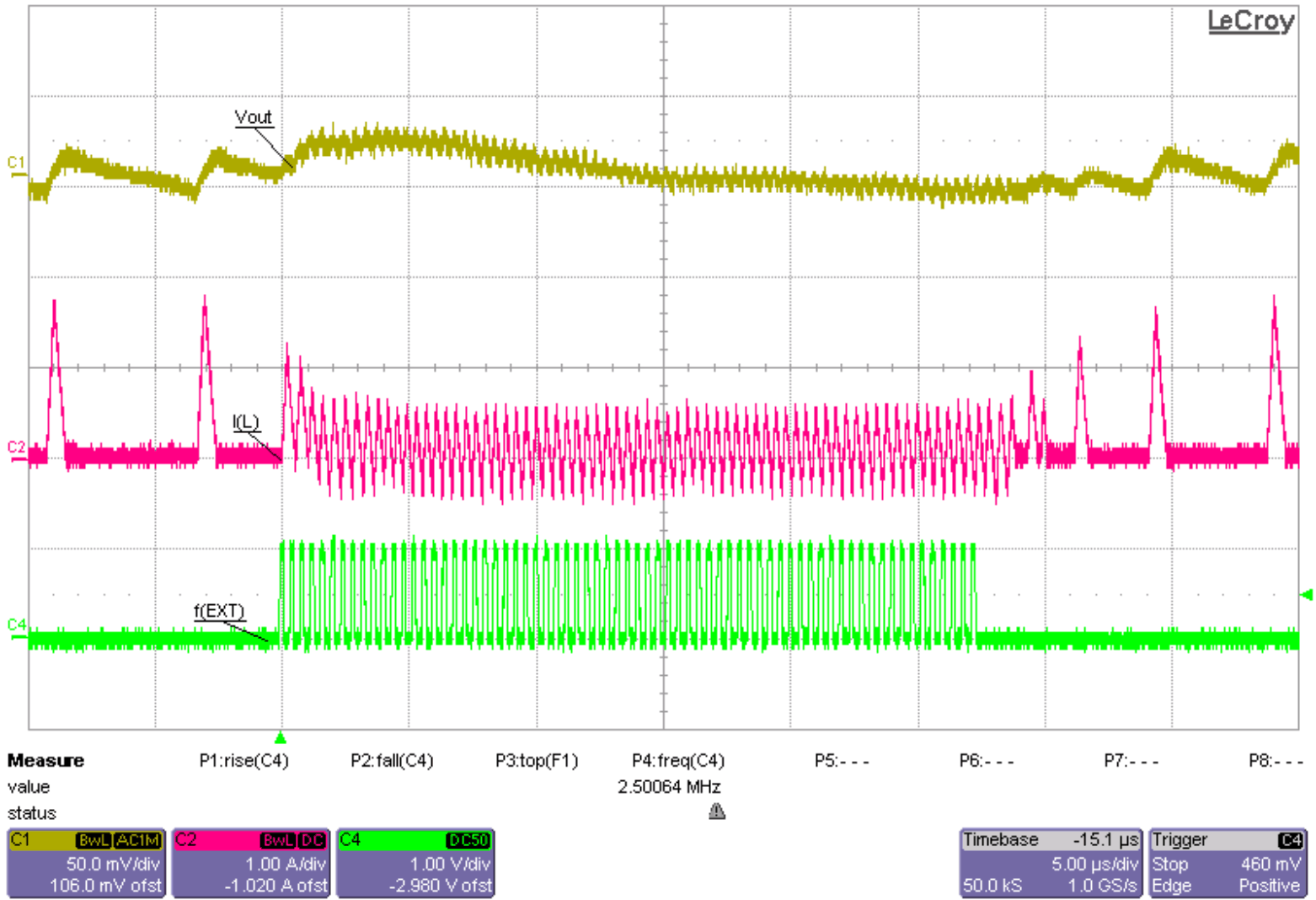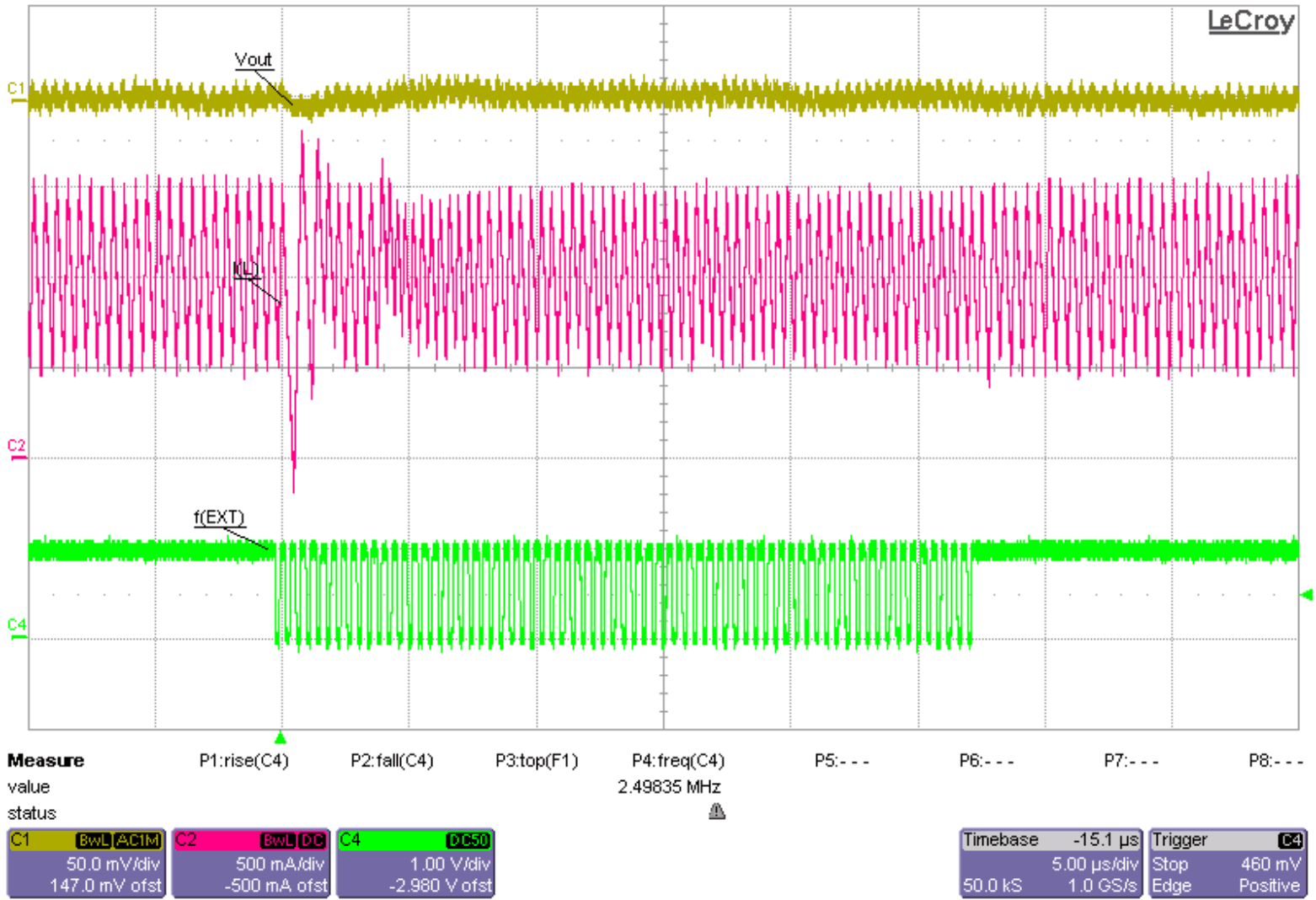JAJSFX8J August 2018 – March 2023 TPS62810-Q1 , TPS62811-Q1 , TPS62812-Q1 , TPS62813-Q1
PRODUCTION DATA
- 1 特長
- 2 アプリケーション
- 3 概要
- 4 Revision History
- 5 Device Comparison Table
- 6 Pin Configuration and Functions
- 7 Specifications
- 8 Parameter Measurement Information
- 9 Detailed Description
- 10Application and Implementation
- 11Device and Documentation Support
- 12Mechanical, Packaging, and Orderable Information
パッケージ・オプション
メカニカル・データ(パッケージ|ピン)
- RWY|9
サーマルパッド・メカニカル・データ
- RWY|9
発注情報
10.3.3 Synchronizing to an External Clock
The TPS6281x-Q1 can be externally synchronized by applying an external clock on the MODE/SYNC pin. There is no need for any additional circuitry as long as the input signal meets the requirements given in the electrical specifications. The clock can be applied / removed during operation, allowing you to switch from an externally-defined fixed frequency to power-save mode or to internal fixed frequency operation. The value of the RCF resistor must be chosen so that the internally defined frequency and the externally applied frequency are close to each other. This ensures a smooth transition from internal to external frequency and vice versa.
 Figure 10-60 Schematic Using External Synchronization
Figure 10-60 Schematic Using External Synchronization
| VIN = 5 V | RCF = 8.06 kΩ | IOUT = 0.1 A |
| VOUT = 1.8 V | fEXT = 2.5 MHz |

| VIN = 5 V | RCF = 8.06 kΩ | IOUT = 1 A |
| VOUT = 1.8 V | fEXT = 2.5 MHz |